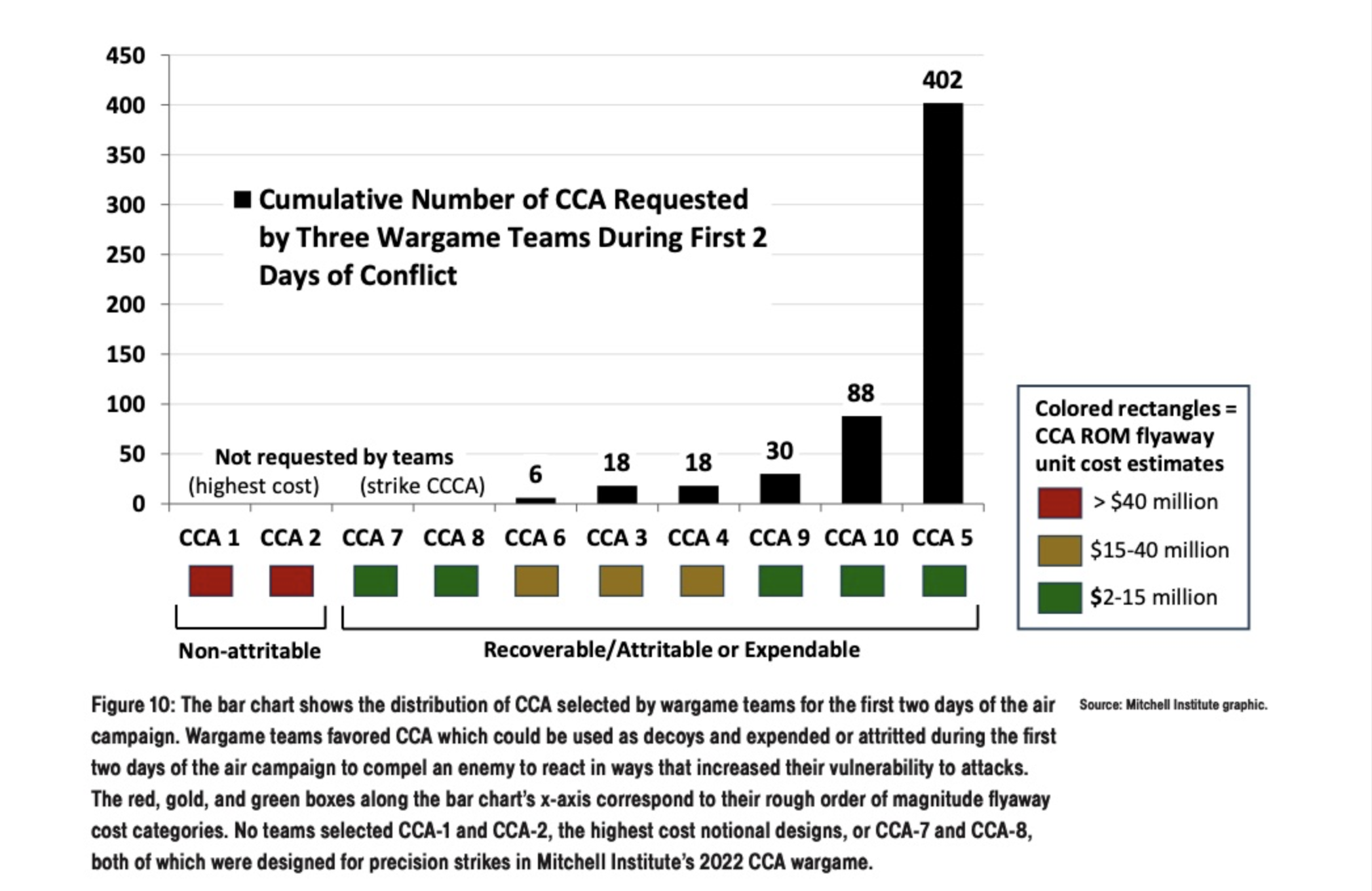Robot wingmen vs. China: What a think tank’s wargame revealed about a key USAF concept
The U.S. Air Force still needs to figure out the “right tradeoffs” to balance cost and capability for its future family of drones, a prominent airpower think tank says after testing how a mix of unmanned and manned aircraft would fare in a fight with China.
During a July 2023 wargame run by the Mitchell Institute for Aerospace Studies, three “blue” air teams used a mix of collaborative combat aircraft, or CCAs, as sensors, decoys, jammers, and weapon launchers to “disrupt and stimulate” China’s integrated air defense system, “locate its critical nodes, and begin to attrit threats to support crewed aircraft operations,” according to the institute’s new report on CCAs.
The Mitchell Institute is sponsored by defense companies and is an affiliate of the Air & Space Forces Association.
Released on Tuesday, the report echoes the Air Force’s own argument for CCAs: the service needs them as its fighter force shrinks.
But realizing this vision hinges on the service’s ability to buy it. Since the Next Generation Air Dominance, or NGAD, manned fighter aircraft, won’t be ready until the 2030s and will likely have a hefty price tag, the service is relying on CCAs to provide “affordable mass.”
The Air Force has been reluctant to release the exact cost range for the drones, but Air Force Secretary Frank Kendall has said he wants a single CCA to cost no more than a third of an F-35—meaning a CCA would cost about $27 million.
The Mitchell wargame featured ten types of CCAs, ranging from expendable, $2 million drones to highly capable, $40 million “non-attritable” ones.
The biggest takeaway was the importance of affordability, since the teams gravitated towards lower-cost CCAs across the board, Robert Winkler, vice president of corporate development and national security programs at Kratos Defense, said Tuesday during the report’s release. Winkler said his team tended to use CCAs in the $10 million range.
During the first few days of the “campaign,” teams used a mix of lower-cost, expendable CCAs in large numbers, as well as moderate-cost CCAs that can be recovered and regenerated for additional missions.
The Air Force will need to buy these drones in the thousands, since teams in the wargame requested hundreds of CCAs just on the first day of conflict, said Mark Gunzinger, director of future concepts and capability assessments at the Mitchell Institute.

“That means the Air Force must be able to buy them at that scale, which is going to drive the need for affordability. More stealth, more range, larger payloads, more sensors, mission systems support—that can drive up costs, so the key is to understand what kind of tradeoffs to make so you have affordable systems, you can buy at scale, and yet they are combat credible,” Gunzinger said Monday.
The Air Force recently confirmed that five companies—Boeing, General Atomics, Lockheed Martin, Northrop Grumman, and Anduril—are under contract to design and build a fleet of at least a thousand CCAs.
The contract features mainstay defense contractors but notably leaves out Kratos, which has been experimenting with the Air Force on its XQ-58 Valkyrie. This might be due to the service wanting a larger aircraft with a more powerful engine than Kratos’s offering. Valkyrie has been a part of AFRL’s Skyborg program, an effort to develop an autonomy core system to allow future drones to operate with manned aircraft.
More details on the Air Force’s plans for the robot wingmen will likely be released next week at the annual AFA Warfare Symposium in Colorado.





Comments are closed.